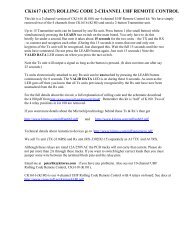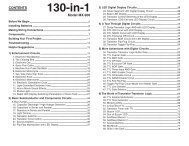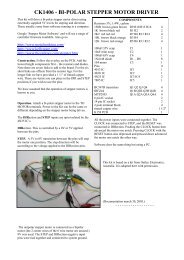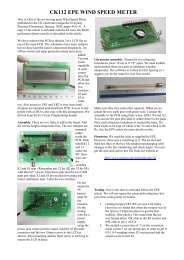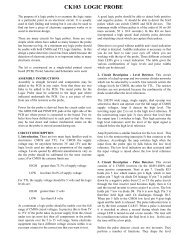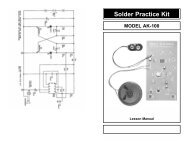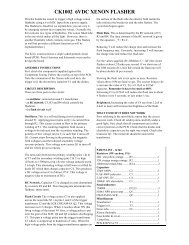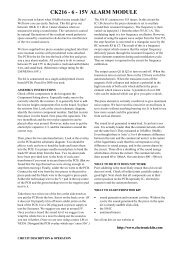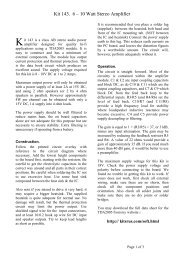SNAP CIRCUITSTM - Carl's Electronic Kits
SNAP CIRCUITSTM - Carl's Electronic Kits
SNAP CIRCUITSTM - Carl's Electronic Kits
Create successful ePaper yourself
Turn your PDF publications into a flip-book with our unique Google optimized e-Paper software.
Project #166<br />
Water Detector<br />
Build the circuit at left and connect the two jumpers to it, but leave the<br />
loose ends of the jumpers lying on the table initially. Turn on the switch<br />
- the LED (D1) will be dark because the air separating the jumpers has<br />
very high resistance. Touch the loose jumper ends to each other and<br />
the LED will be bright, because with a direct connection there is no<br />
resistance separating the jumpers.<br />
Now take the loose ends of the jumpers and place them in a cup of<br />
water, without letting them touch each other. The LED should be dimly<br />
lit, indicating you have detected water!<br />
For this experiment, your LED brightness may vary depending upon<br />
your local water supply. Pure water (like distilled water) has very high<br />
resistance, but drinking water has impurities mixed in that increase<br />
electrical conduction.<br />
Project #167<br />
Salt-Water Detector<br />
OBJECTIVE: To show how adding salt to water<br />
Place the jumpers in a cup of water as in the preceding project; the<br />
LED (D1) should be dimly lit. Slowly add salt to the water and see how<br />
the LED brightness changes, mix it a little so it dissolves. It will slowly<br />
become very bright as you add more salt. You can use this bright LED<br />
condition as a salt-water detector! You can then reduce the LED<br />
brightness by adding more water to dilute the salt.<br />
Take another cup of water and try adding other household substances<br />
like sugar to see if they increase the LED brightness as the salt did.<br />
-23-





